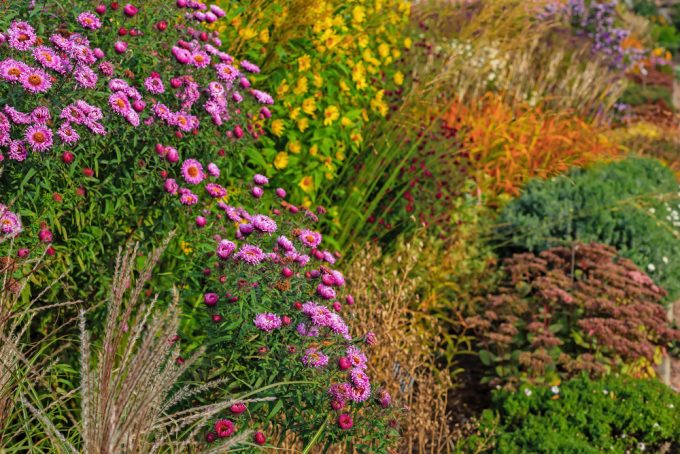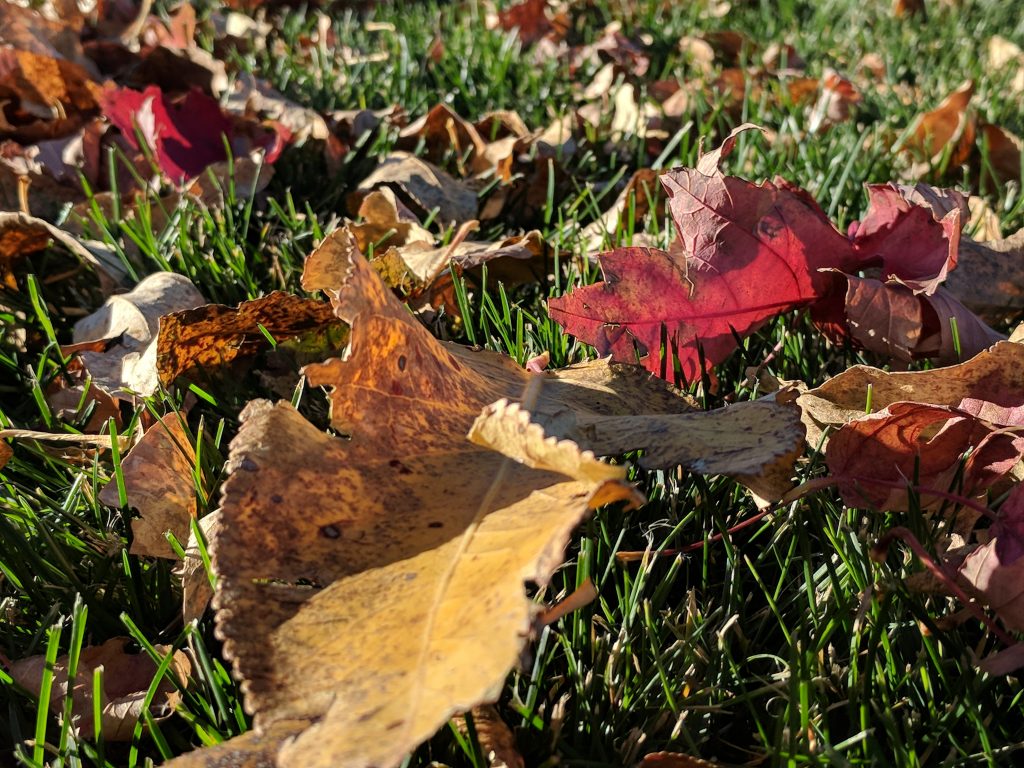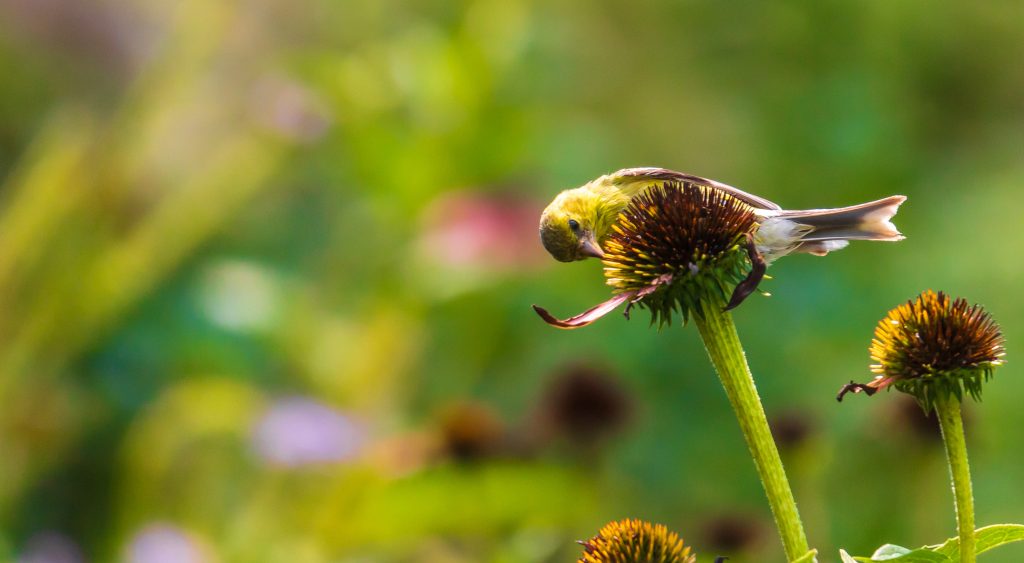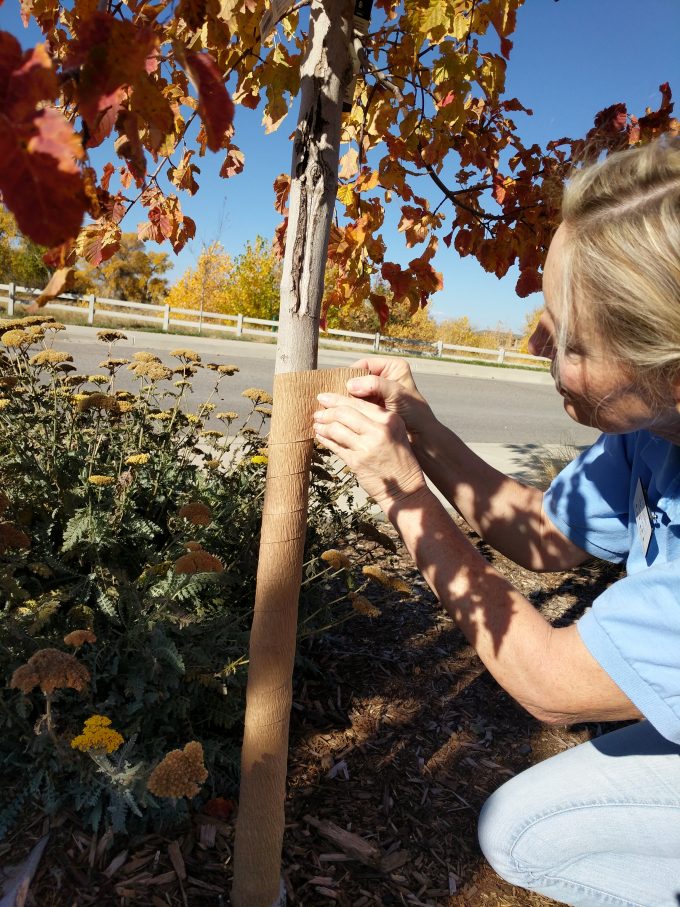There was a time when “fall clean-up” meant getting out the loppers and hedge trimmers and taking almost everything in our gardens down to the ground. It was about leveling and cleaning away all the leaves and old seed heads. But that was then.
Now there’s a growing movement to leave our landscapes and garden beds at least a little bit messy to help out Mother Nature and the many ecosystems she’s built throughout our yards.
“What ecosystems?” you say…
I like the notion of an ecosystem being “a bubble of life,” a place where plants, animals, and other organisms work together. The most basic ecosystem in our yards is our soil; specifically, the incredible abundance of microscopic creatures and fungi that makes soil come alive.
Maybe it helps to see as shown above that under a powerful microscope, healthy soil can look quite beautiful, like a garden in its own right. By nurturing the life in the soil, we’re giving our plants a healthier place to set down roots… ideally, giving us better plants, more food, and more flowers. A better “bubble of life” all around.
So how do we put this to work in our landscape?
One very basic way to green up your fall clean-up is to look at our lawns. I’m a die-hard believer in the benefits of a good aeration. I actually have it done both spring and fall. So how does that help?
It’s pretty obvious that a deep-core aeration “opens up the soil.” But it’s not just a matter of removing plugs of compacted soil so water can penetrate more easily. The living organisms in the soil need both water and air to thrive. Aeration can help make that happen.
It’s those microbes and fungi that create rich, root-friendly soil, which is especially helpful in areas with our challenging Colorado clay. As an added bonus, aerating and then raking in some finely-milled compost like EKO Lawn Topdressing can speed that process along even more by helping to hold the soil open.
Steadily improving the health of your soil can also reduce the need for weed killers in lawns that are thin and struggling. Thick, healthy turf can block many annual weed seeds from germinating without the help of herbicides or other weed preventers
And then there are leaves!
Fallen leaves are a treasure, not trash! Dried fall leaves are one of the most underrated resources Mother Nature gives us. They’re free nutrients for our gardens, and should never end up in a landfill!
Part of the value of leaves is the amazing number of beneficial microbes that are covering the surface of each leaf, just waiting to begin their job of decomposition, enriching the soil.
If lots of leaves accumulate on your lawn, you can always mow them and then leave the shredded leaves in place to feed the soil and the grass roots growing in it. Mulching the leaves is certainly easier than bagging them, and makes a lot more sense when greening up your clean-up is important to you.
Once leaves have dried, you can also rake them onto your perennial beds. (Wet leaves are too heavy and will mat down, blocking air and water from your plants.) You’d be surprised at the abundance of life that will spend the winter in that nice bed of leaves!
You could also dig the dried leaves into your empty vegetable or annuals beds. They’ll have plenty of time to decompose over the winter, feeding and enhancing the soil in those beds by spring. Just make sure the soil is completely dry any time you work it.
Be sure to leave the soil in those beds rough and open. Resist the urge to rake them smooth! The more the soil surface is open to fresh air, the sooner the beds will warm up in the spring, kicking that beneficial microbial life into high gear and helping the bed dry out for spring planting.
And how about that notion of leaving your garden a bit messy?
There are all kinds of ways that a messy garden can benefit Mother Nature. Take the birds, for example.
The Cornell Lab of Ornithology urges gardeners not to cut down stems with seed heads like coneflowers (echinacea). Those seed heads can provide food for many of the birds that spend the winter along the Colorado Front Range. Dried seed heads from zinnias and several native plants have winter food to offer, too. The seed heads will draw songbirds including finches and black-capped chickadees. It’s a perfect example of a healthy ecosystem at work.
If you’re concerned that plant debris harbors diseases or insect pests, getting rid of it is certainly appropriate.
Even stubble can be beautiful
As always, beauty is in the eye of the beholder. But for many of Colorado’s native bees, a hollow or pithy flower stem can look like the perfect spot to call home as winter moves in.
Even if you feel compelled to cut down flowers with pithy cane-like stems, you can bundle them up and set them in a safe place for the bees to find.
Praying mantises also use stems and branches to anchor their egg sacs during the winter. These remarkable structures called “oothecas” look like hardened foam, which is pretty much what they are.
Praying mantises aren’t “beneficial” in the true sense. They prey on damaging insects like aphids and grasshoppers. But they’ll also grab a bee or butterfly larva when they can. Still, they’re fascinating creatures and are well worth helping through a cold winter by offering shelter in our yards.
A couple more tips for greening up your fall clean-up
There’s always more we can do to help Mother Nature give us the healthiest, and greenest gardens, both ecologically speaking and literally.
*** After the first frost, fluff the organic mulch in your flower beds, or add more if needed. A two to a three-inch blanket of bark chips, shredded dried leaves, or pine needles will help maintain moisture and keep the soil temperature more even so plants don’t emerge from dormancy too soon.
*** Again, after our first hard frost, wrap young trees, especially fruit trees, for their first few winter seasons. Tree wrap shades the south and southwest-facing bark and keeps it from breaking dormancy on warm winter days, then freezing and splitting when cold temperatures return. Apply the tree wrap from the base of the trunk upwards, overlapping with each pass, until you reach the first branch. Secure the wrap to itself with strong tape. his can make all the difference in the long-term survival of these trees.
There’s a lot to be done in our gardens this time of year, but by greening up your clean-up, you can reduce your fall workload and help Mother Nature in the process.













